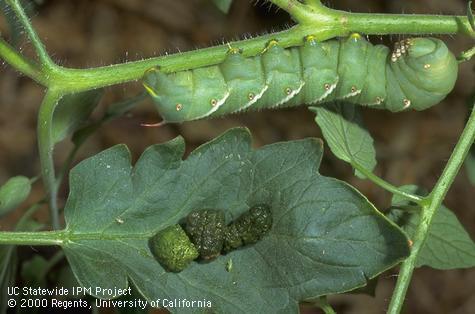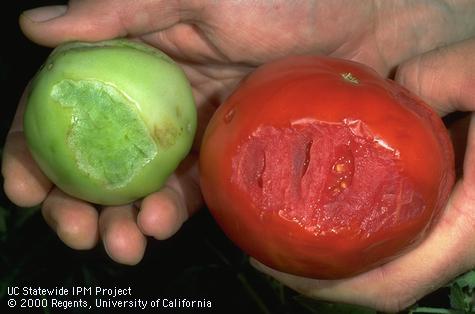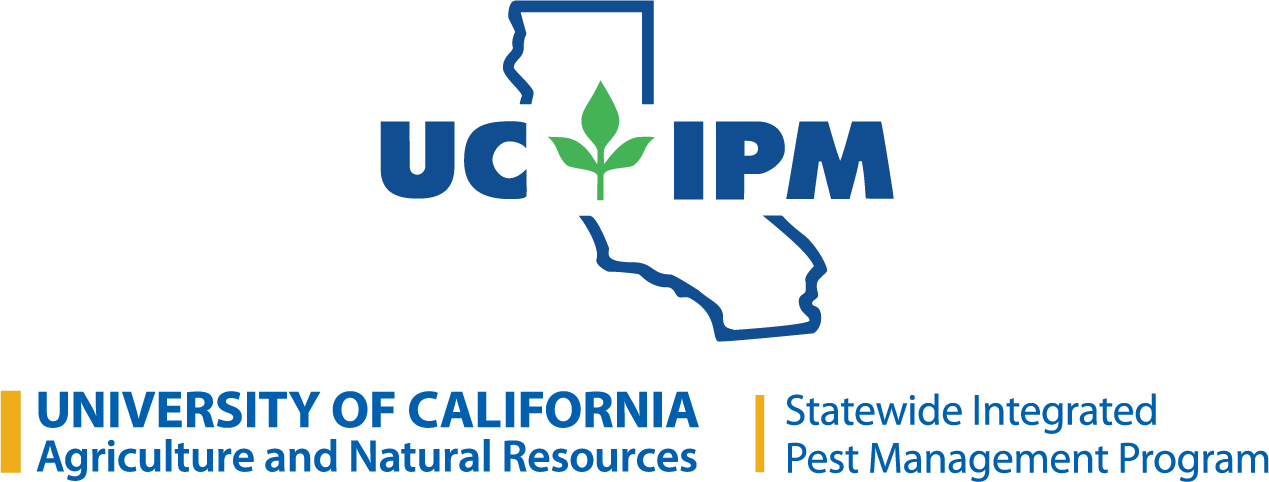Hornworms of all sizes have a distinctive horn at the rear end. Mature caterpillars are very large, up to 4 inches long.
Identification
Tomato hornworms are likely to be the largest caterpillars you see in the vegetable garden. Their striping pattern makes them hard to spot despite their size. Note the horn or thorn at the rear end. Large, black or green droppings on the ground beneath tomato plants usually indicate the presence of hornworms. Adult moths have a wingspan up to 5 inches.

Life Cycle
Damage by hornworm larvae is usually most common in midsummer, but there may also be a small population peak of larvae in the late summer. Infestations tend to be more severe in warm inland areas. The larval form is the only stage that causes damage. Eggs are laid singly on leaves. Larvae feed, then burrow into the soil to pupate. The adult develops over the winter and emerges.

Damage
Entire leaves and small stems may be consumed. Large pieces from green fruit may also be chewed.

Solutions
Handpick or snip hornworms with shears. Natural enemies normally keep populations under control. Hornworm eggs are attacked by Trichogramma parasites and the larvae by Hyposoter exiguae. There are also several general predators to keep populations under control. Bacillus thuringiensis or spinosad are effective against smaller larvae. Discing or rototilling after harvest destroys pupae in soil and prevents adults from developing.
